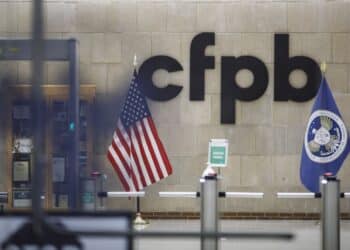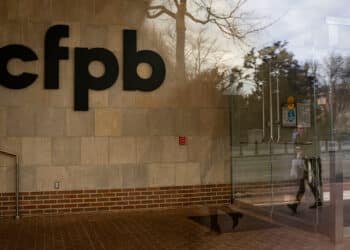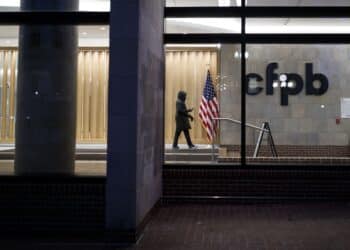May Debtors Recover Damages for Emotional Distress Arising From Violations of the Automatic Stay?

The Bankruptcy code provides in 11 U.S.C. § 362(k)(1) that “an individual injured by any willful violation of a stay provided by this section shall recover actual damages, including costs and attorneys’ fees, and — in appropriate circumstances — may recover punitive damages.” The question for courts is whether the “actual damages” provision of section 362(k)(1) includes damages for emotional distress.
Courts have noted that the purpose of the automatic stay is to provide the filer with a “breathing spell,” to stop collection efforts and to prevent harassment. According to the ruling in the Dawson case, “the stay is also intended to relieve the debtor of the financial pressures that drove him into bankruptcy.” In enacting provisions of the code dealing with the stay, Congress sought to protect a debtor not only from financial loss, but also from the emotional and psychological toll that a stay violation can exact upon a debtor. It follows, at least based on the policy underlying the stay, that harm to non-financial interests (well-being) might qualify as actual damages.
At least four circuits — first, third, ninth, and 11th — have expressly concluded that emotional distress damages are available for willful violations of the automatic stay. In so doing, the courts reviewed the legislative history and observed that Congress was concerned not only with financial loss, but also with the emotional and psychological consequences upon an individual, which result from a violation of the stay. In the Dawson and Lansaw cases, the courts looked to the specific interests that Congress intended to protect when enacting the automatic stay provision. Those courts determined that Congress intended to protect both financial and non-financial interests, thus concluding that “actual damages” under section 362(k)(1) include emotional distress resulting from a willful violation of the stay.
The fifth and seventh circuits have left open the possibility that they may be available in some circumstances. These courts were skeptical about ability of a bankruptcy court to award emotional distress damages. In the Aiello case, the court reasoned that the automatic stay protection “is financial in character; it is not protection of peace of mind.” The court noted that nothing prohibits the debtor from seeking state tort law damages for the emotional distress suffered. The Seventh Circuit does theorize that considerations of judicial economy “might” permit an award of emotional distress under section 362 where the individual is also seeking damages for financial injury, but does not acknowledge that such a claim may exist in the context of stay violation without pecuniary damages.
In jurisdictions allowing recovery of emotional distress damages, the burden of production and persuasion falls upon the debtor. Importantly, the standard for debtors to recover is higher than a preponderance of the evidence.
To prove damages, the injured party must establish first that there was a willful violation of the stay. A “willful violation” means that the creditor both knowingly and intentionally took steps prohibited by section 362 while aware of the pending case. Courts have ruled that knowledge of the open bankruptcy is knowledge of the automatic stay. A violation is willful when a creditor acts voluntarily and isn’t coerced.
Once debtors have established a willful violation, they must show that they suffered significant emotional harm. The evidentiary standard is high — clear and convincing evidence. Courts have repeatedly held that the harm suffered must be more than the anxiety and pressures inherent in the bankruptcy process. Certain courts impose an additional requirement to show a causal connection between that significant harm and the automatic stay violation.
To meet this high evidentiary burden, debtors may establish that they suffered significant emotional harm by presenting corroborating medical evidence or non-expert testimony from family members, friends, or coworkers as to any manifestations of mental anguish. In some cases, significant emotional distress may be readily apparent even without corroborative evidence. Some courts have even found that a creditor’s conduct may have been so egregious that any reasonable person would suffer significant emotional harm.
Most recently, in the Lansaw case, the Third Circuit was presented with issues of emotional distress damages in the context of a stay violation. In reviewing the legislative history and analyzing decisions reached by some of the other circuit courts around the country, the court permitted the debtor to recover damages for emotional distress. The facts presented in Lansaw painted a vivid picture of the egregious conduct of the creditor and the type of distress suffered by the debtor. While the only evidence presented regarding emotional distress was verbal testimony from the debtors, the court concluded that they proved they suffered damage. Specifically, the court agreed with the Ninth Circuit that financial loss is not a prerequisite for emotional distress damages, but declined to adopt a bright line rule on the evidentiary standard of proof.
Creditors must be vigilant about recognizing when the bankruptcy code is in play to avoid the pitfalls associated with violating the automatic stay, which may lead to sanctions and high damage awards. Once made aware of a pending bankruptcy or discharge order, by any method, creditors should cease all post-petition collection activity and contact counsel to discuss the best practice method for handling the debtor’s account.
For more information, contact Karina Velter.















